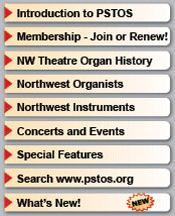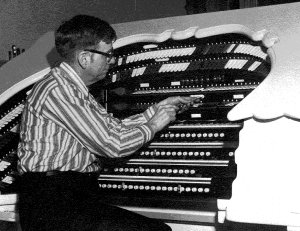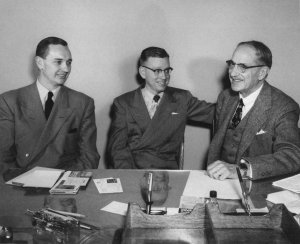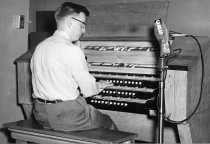


In Memory of William J. "Bill" Bunch (1917-1998)
 |
On May 2, 1998, following a long
battle with Parkinson's disease, the pipe organ community lost one of its
finest. Bill Bunch, in writing his memoirs in 1993, wrote, "As I approach my seventy-fifth birthday, I have been looking back on my life and realize how great a part music in general and the organ in particular has played. It is with deep gratitude that I have been privileged to have been an organ builder and organist for, to me, the organ is the most exciting instrument of all. There is a real thrill in being able to support a large congregation singing praises to the Lord. With its many voices one can create beautiful effects and almost orchestral variety." In 1935, as a high school junior, Bill started working at the Graham Theatre in Elma. |
He was ticket taker, janitor, baby sitter, and usher, but most importantly of all, at age 16 he fell in love with the 2/6 Wurlitzer in the theatre and soon was playing regularly before the shows.
In 1939 Bill became organist at Seattle's Central Lutheran Church, playing an eight rank Moller. This was also the year he graduated from the University and at the same time learned that Sandy Balcom was "looking for a boy". By 1945 Bill was shop superintendant. Then came a big move to Aeolian-Skinner in 1956, where he eventually became vice-president in charge of production.
His crowning achievement in the area of theatre organs came when he was chosen to build the replacement four-manual console for the former New York Paramount organ whose console was destroyed by arson previous to installation in Wichita, Kansas.

Bill seated at the nearly-completed replacement
console for the former New York Paramount organ
in the early 1970s
The project extended over a period of almost three years due to the heavy organ production schedule under way at Balcom and Vaughan. The Wichita console was "fitted in" at every available spare moment.
Bill has left his entire collection of theatre organ memorabilia to our chapter for archiving and safe keeping. This collection is unsurpassed as it relates to our Pacific Northwest area, and hopefully some day it can be cataloged and displayed properly.
Bill was a charter member of the national ATOE, a charter member of the Eastern Massachusetts Chapter (the first ATOE Chapter) and a charter member of our Puget Sound Chapter.
If there is a pipe organ in that big chamber in the sky, surely Bill Bunch will be either playing, adding a rank or two, or fine tuning.
Bill Bunch was given much of the photographic file record of the Balcom & Vaughan firm when old material was thrown out. He saved dozens of early day pictures of Morton and Wurlitzer installations and also worked to accurately document the history of various original and re-installed instruments. All of this material is now part of the PSTOS Archives.
| About this site | © PSTOS, 1998-2004 |

